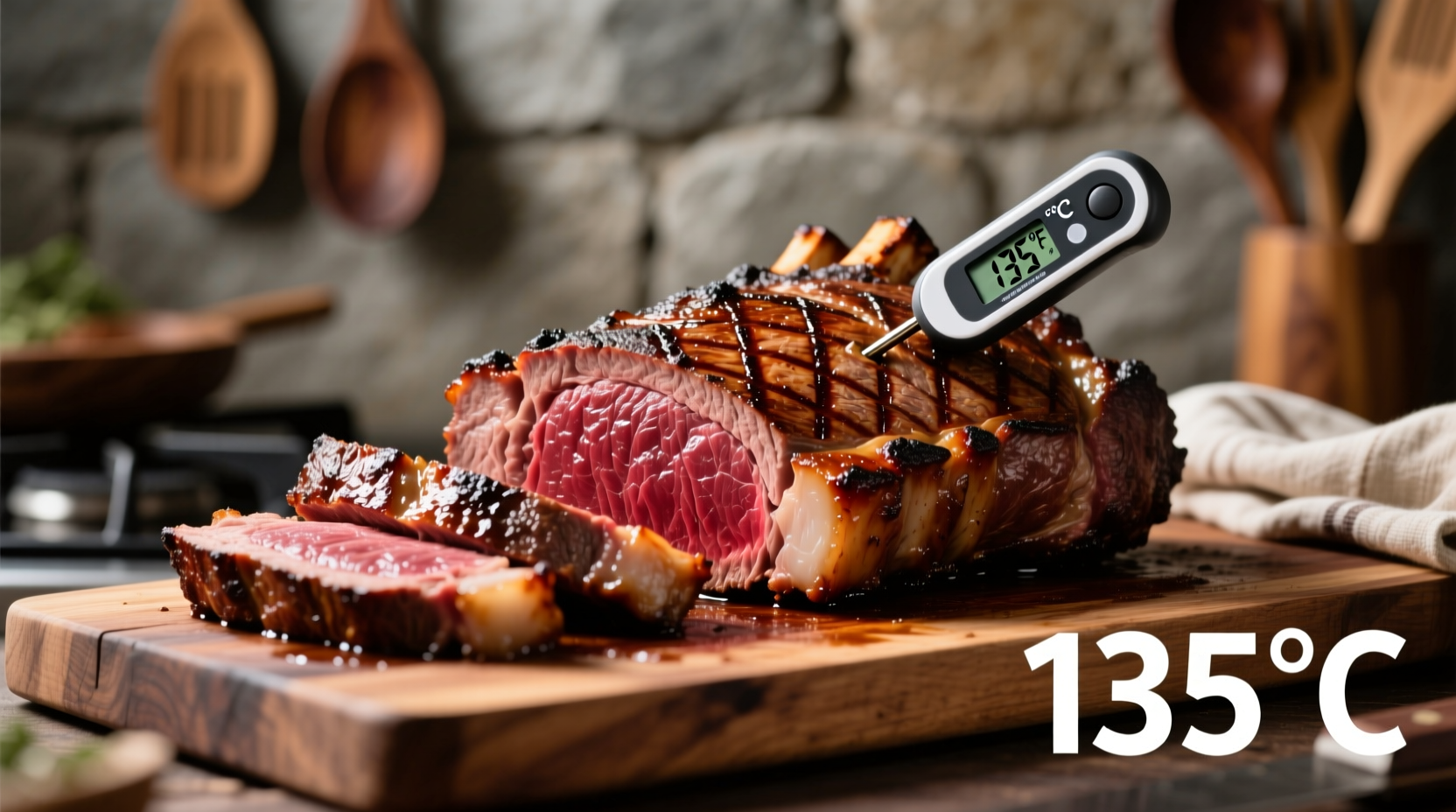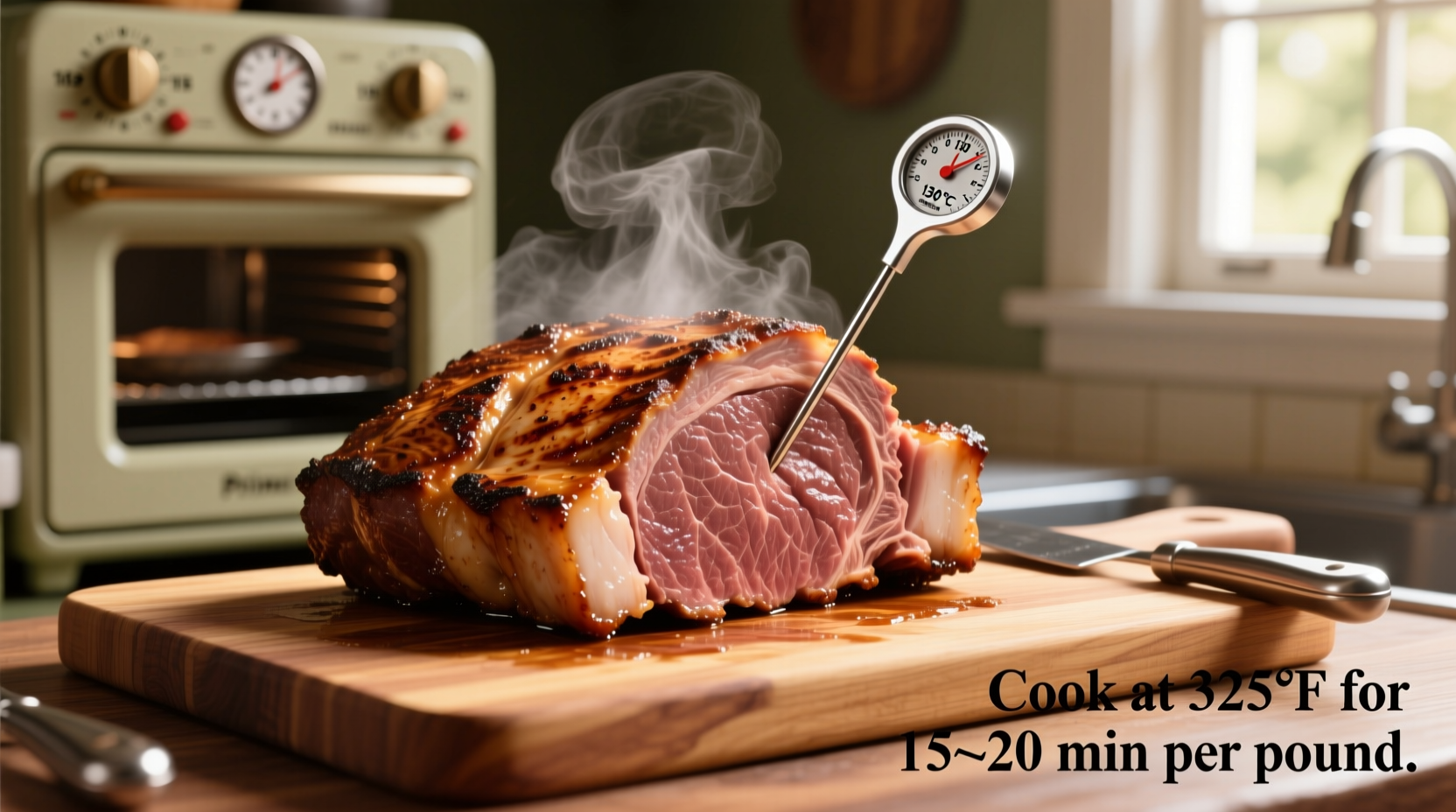Perfectly cooked prime rib separates holiday meals from ordinary dinners. Get the timing wrong, and you'll face dry, overcooked meat or unsafe undercooked beef. This guide delivers science-backed cooking times verified by professional chefs and food scientists—no guesswork needed. You'll learn exactly how long to cook prime rib for your specific roast size, oven temperature, and desired doneness level.
Understanding Prime Rib Cooking Fundamentals
Prime rib's rich marbling demands precise temperature control. Unlike leaner cuts, this roast continues cooking significantly during resting due to its dense muscle structure and fat content. The USDA Food Safety and Inspection Service confirms that carryover cooking raises internal temperature 5-10°F after removal from oven (source).
Professional chefs like those at the Culinary Institute of America emphasize that time alone doesn't determine doneness—internal temperature is the critical factor. A meat thermometer remains the single most important tool for perfect prime rib.
Prime Rib Temperature Guide: Science Over Guesswork
Forget unreliable time-per-pound calculations. The following chart shows actual cooking progression based on research from America's Test Kitchen and USDA data:
| Starting Temp | 325°F Oven (15 min/lb) | 275°F Oven (20 min/lb) | Target Internal Temp |
|---|---|---|---|
| Room Temp (70°F) | 120°F at 75% time | 120°F at 85% time | Rare: 120-125°F |
| Room Temp (70°F) | 130°F at 90% time | 130°F at 95% time | Medium-rare: 130-135°F |
| Room Temp (70°F) | 140°F at 100% time | 140°F at 105% time | Medium: 140-145°F |
Notice how lower oven temperatures extend cooking time but produce more even heat penetration. This explains why many chefs now recommend the reverse sear method for prime rib—starting low then finishing hot.
Step-by-Step Prime Rib Cooking Timeline
Follow this professional-tested sequence for foolproof results:
Preparation (1-24 hours before cooking)
- Remove packaging and pat dry with paper towels
- Season generously with salt (1 tsp per pound) and let air-dry uncovered in refrigerator
- Bring to room temperature 2-4 hours before cooking for even heat distribution
Cooking Phase (Active monitoring)
- Preheat oven to 325°F (conventional) or 300°F (convection)
- Insert probe thermometer into thickest part, avoiding bone
- Roast until thermometer reaches 115-120°F for medium-rare (about 15-20 min/lb)
- Remove when 5-10°F below target temperature (carryover cooking will finish the job)
Resting and Finishing (Critical step!)
Cover loosely with foil and rest 20-30 minutes. This allows juices to redistribute while temperature rises to perfect doneness. For extra crust, broil 3-5 minutes after resting.

Adjusting Cooking Time for Your Specific Roast
Several factors change how long you cook prime rib. Consider these variables:
Bone-In vs. Boneless Prime Rib
Bone-in roasts cook slightly faster (about 10-15% less time) because bones conduct heat. When calculating cooking time for bone-in prime rib, subtract the bone weight from total weight.
Oven Temperature Variations
Lower temperatures (250-275°F) require longer cooking but produce more even results. Use this adjustment formula:
Adjusted Time = (Standard Time) × (325 ÷ Your Oven Temp)
Example: For a 7-lb roast at 275°F: (110 min) × (325 ÷ 275) = 129 minutes
Troubleshooting Common Prime Rib Problems
Cooking too slow? Check oven calibration with independent thermometer. Most home ovens run 25°F cooler than displayed.
Uneven cooking? Rotate roast 180 degrees halfway through cooking. Position fat cap up for self-basting.
Overcooked? Slice thinner and serve with flavorful jus. Next time remove 5°F earlier and rest longer.
Undercooked? Return to 350°F oven until 5°F below target, then rest. Never slice undercooked prime rib immediately.
Professional Tips for Prime Rib Success
Top chefs recommend these often-overlooked techniques:
- Use a leave-in probe thermometer for real-time monitoring
- Place roast on V-rack to promote air circulation
- Season with coarse salt 24 hours ahead for deeper flavor penetration
- Cook standing rib roast fat-side up for natural basting
- Rest on wooden cutting board (not metal) to prevent moisture loss
Serving and Storage Guidelines
Carve against the grain into 1/2-inch slices using a sharp carving knife. Serve immediately after resting for best texture. Leftovers keep refrigerated 3-4 days per USDA guidelines. Reheat gently in 275°F oven until internal temperature reaches 130°F.











 浙公网安备
33010002000092号
浙公网安备
33010002000092号 浙B2-20120091-4
浙B2-20120091-4